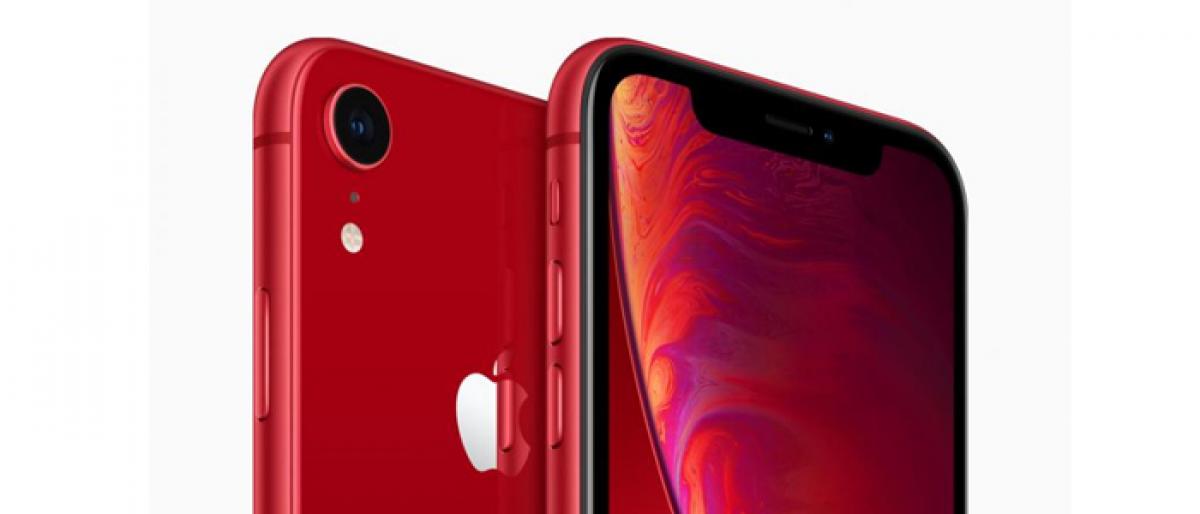A matter of volume: Threat from ascendant Chinese phones hangs over Apple

A raft of profit warnings from Apple suppliers this week has fueled investor concerns that iPhone sales, in terms of volume, have hit a wall that could spell trouble for the companys plans to make services its main pillar of growth
A raft of profit warnings from Apple suppliers this week has fueled investor concerns that iPhone sales, in terms of volume, have hit a wall that could spell trouble for the company’s plans to make services its main pillar of growth.
For the past year, investors had largely been willing to overlook stagnating unit sales of the iPhone because average selling prices kept rising. But it now faces fierce competition from mid-priced phones from makers such as Xiaomi.
Apple has often stated its plan to increase its revenue from paid services, such as Apple Music and iCloud. That, at least in part, requires a growing base of device owners driven by its iPhone, which analysts believe accounts for about two-thirds of the 1.3 billion Apple devices in use around the world.
Wall Street analysts have expressed concerns that slower overall smartphone sales will make it harder for Apple to hold smartphone market share as people put off buying its generally more expensive phones. That, in turn, could hurt the growth of Apple’s services revenue, said Bernstein’s Toni Sacconaghi.
Without volume growth in promising overseas markets such as India, Brazil and Russia, the worry among analysts and investors is that Apple has at least parts of its strategy wrong with too much emphasis on its premium brand and the high prices that go with it, more than $1,000 for its top models.
Hal Eddins, the chief economist for Apple shareholder Capital Investment Counsel, said phones like the OnePlus 6T are roughly comparable to Apple’s high-end phones for almost half the price. “You can get a lot of phone for a lot less,” he said. “The phone landscape is rapidly changing and I think manufacturers are missing a trick by going the $1,000 route.”
Apple declined to comment on its strategy, or the share moves among its suppliers.
The company’s executives have warned investors in the past against fixating on sparse data points from its large supply chain. Apple has for more than a decade insisted that its gadgets should not be judged on their specs alone, an argument that sales data suggests Apple made successfully.
The company also has customer satisfaction and loyalty rates that are unparalleled in the mobile phone industry, said Ben Bajarin, an analyst with Creative Strategies.
Nevertheless, a trio of Chinese smartphone makers - Xiaomi, Oppo and Vivo - accounted for roughly a quarter of the global market in the first half of 2018, according to data from research firm IDC, up from just 8.9 per cent for all of 2014 and almost 20 per cent last year.
With the exception of fiscal 2015, Apple has not increased its market share. It had 13.6 per cent of the world market in the first half of this year, down from 14.8 per cent for 2014, although its share typically rises with full-year results due to strong sales in December.
The 1.3 billion iPhones, iPads and Macs used around the world serve as the pool of potential customers for Apple’s services - a business that hit $37.1 billion in revenue for the most recent fiscal year.
That represented 14 per cent of Apple’s overall revenue, up from 8.5 per cent in fiscal 2015 when iPhone unit sales hit their all-time high.
But IDC expects the global smartphone market to grow only 2.4 per cent on a compound basis to 1.6 billion units by 2022, indicating a saturated market in which the Cupertino, California-based firm will be fighting rivals for each customer.
Xiaomi, in particular, is gaining fans rapidly. In India, where Apple has only a minor presence, Xiaomi has in some quarters beat Samsung to become the country’s top phone seller and is also making headway into European markets like Spain, IDC said in a report.
According to data from IDC, Xiaomi was the top smartphone seller in India in the first and second quarters of 2018, with 30.3 per cent and 29.7 per cent, respectively, of the market for smartphone units there.
“This is the case where it’s much different in other parts of the world,” said Ryan Reith, program vice president for IDC’s mobile device tracking program, noting that most US consumers are not familiar with Xiaomi, Oppo and Vivo phones.
“Many of those brands don’t play (in the United States), but they’re playing in places where they never played before,” such as India and Europe, he said.
Suppliers Suffer
In its latest earnings this month, Apple shocked investors with a lower-than-expected sales forecast for the holiday shopping quarter and with its announcement that it would stop reporting unit sales for its hardware products as has been customary for the last 20 years.
Underscoring flattening iPhone unit sales, it also said it sold 217.7 million iPhones in its most recent fiscal year, virtually unchanged from the year before and well below a high point of 231.2 million in fiscal 2015.
Its share price, hit at the time of the forecast, has since extended losses after profit warnings from suppliers like Japan Display, British chipmaker IQE and Lumentum Holdings. The stock is now down about 8 per cent since its November 1 earnings.
Trade tension and censors chill China tech scene
Apple’s newest models such as the iPhone XS and iPhone XR are proving popular with its most loyal fans in wealthy economies. But they range up to $1,449 in price - out of reach for many consumers in less developed markets.
Apple’s strategy is to lure those consumers to its eco-system with older models at cheaper prices.
It has also emphasised that its phones are designed to last longer than the competition, expanded its repair options and crafted its most recent operating system update to speed up older devices.
But Chinese smartphone makers have been packing their phones with higher-end chips and features like under-the-glass fingerprint sensors that seek to attract consumers who might otherwise give Apple’s phones a look.
Those manufacturers are increasingly adopting Qualcomm most powerful mobile phone chips, said Cristiano Amon, the head of chip operations at the US chipmaker, which is locked in a bitter court dispute with Apple.
Those phones were initially sold in China but “we’ve also seen them gaining share outside China, especially in areas such as India and Europe,” Amon said.
On its home turf, too, Apple is facing new challenges from at least one Chinese maker, OnePlus, which is creeping into the US firm’s traditionally high pricing territory. Though the iPhone 7’s processor chip beats the OnePlus 6T in some speed tests posted by chip tracking firm Geekbench, the OnePlus phone has a contemporary design with thin bezels around the display, similar to newer iPhone models.
After years of being available in the United States only via an online store and developing a following among tech enthusiasts, the OnePlus 6T is being carried by T-Mobile US stores.
At $549, it sits between the iPhone 7 and iPhone 8 in terms of pricing. Kyle Kiang, the general manager for North America for OnePlus, said first-day sales of the new model were 86 per cent higher in the United States than for the previous OnePlus released there, although he did not disclose absolute unit figures. He said sales were higher because of the T-Mobile relationship.




















